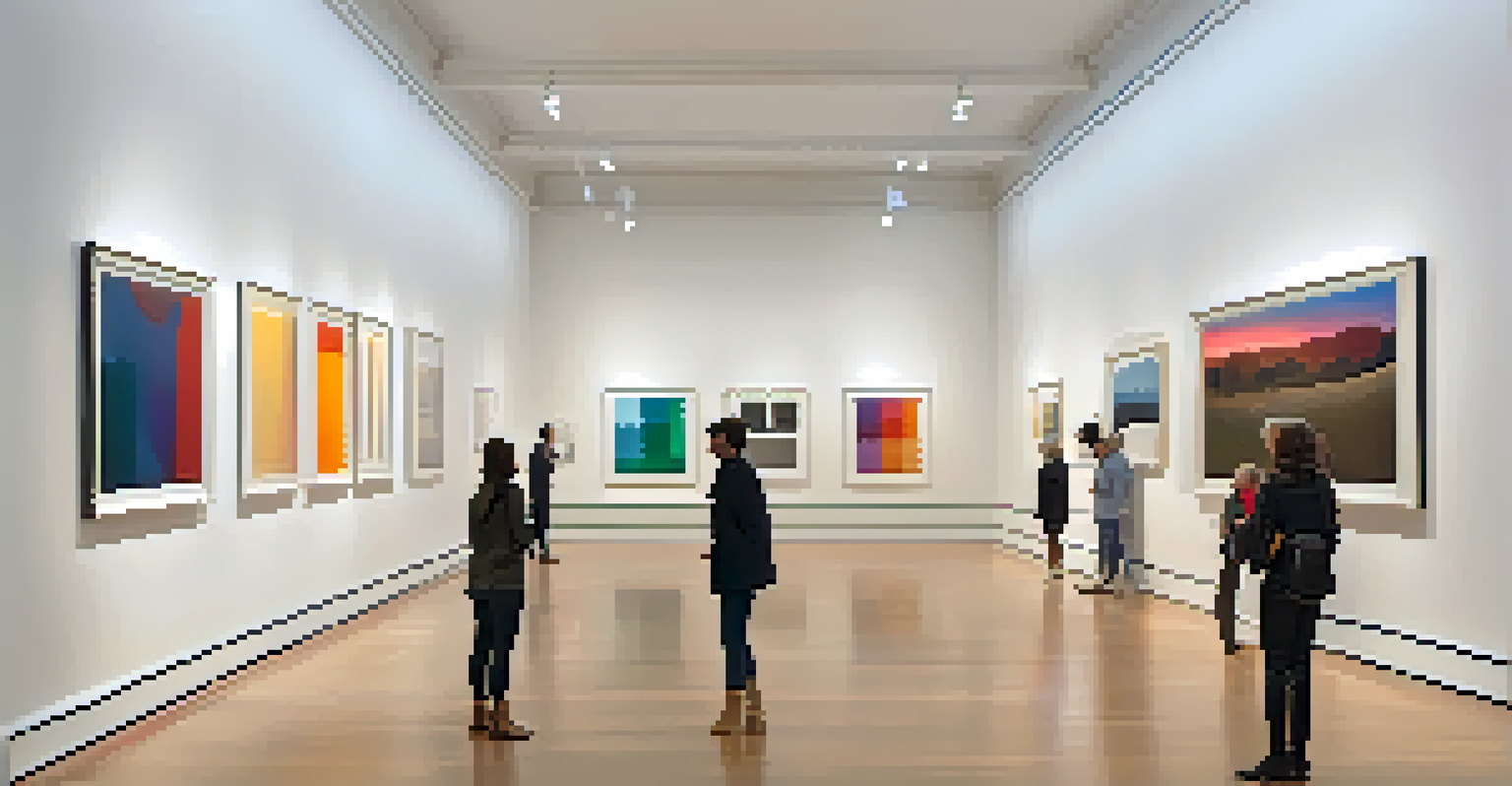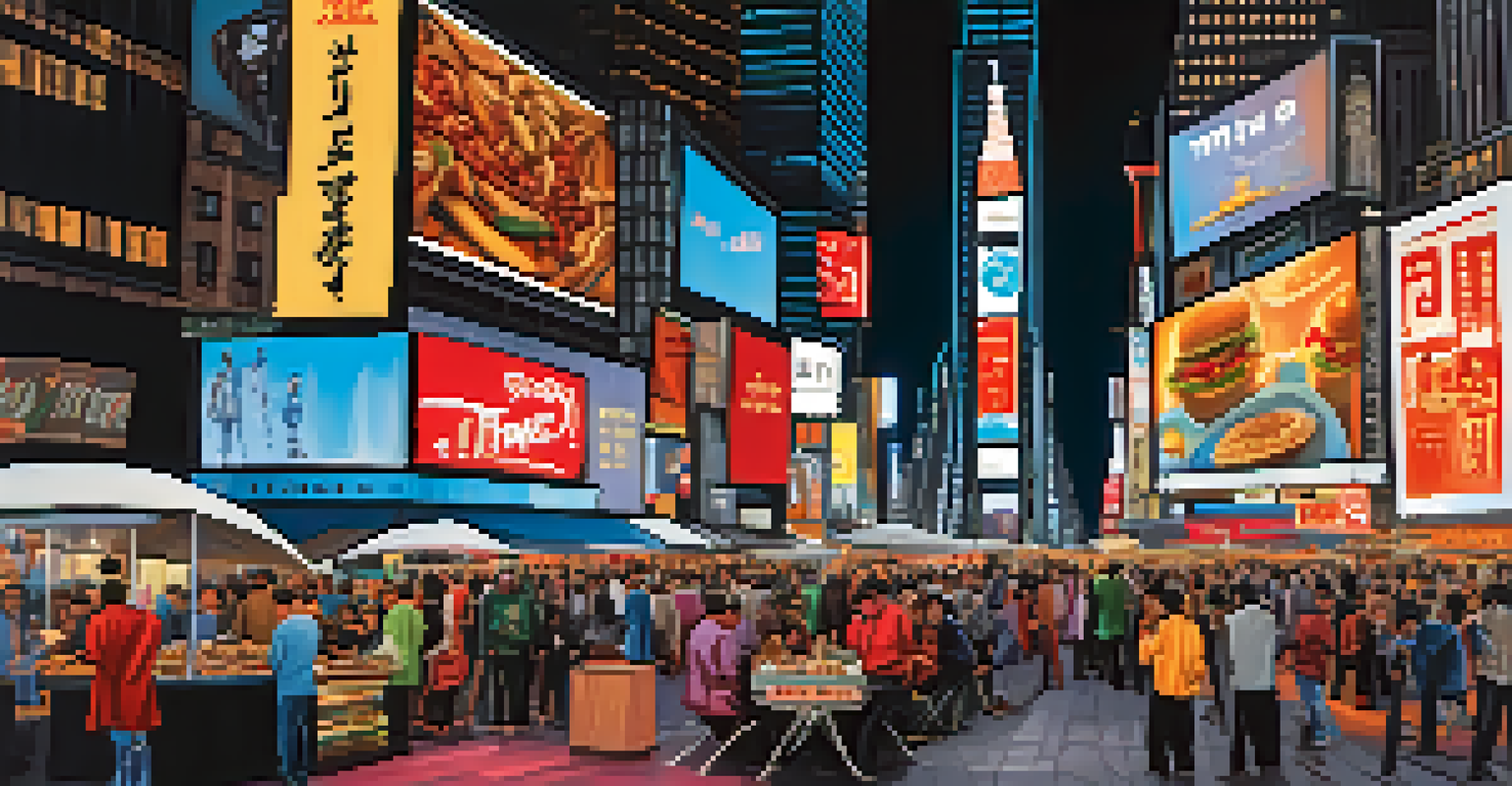New York City's Cultural Institutions as Tools for Diplomacy

The Role of Cultural Institutions in Diplomacy
Cultural institutions like museums, theaters, and galleries play a vital role in diplomacy. They serve as platforms for dialogue, allowing people from diverse backgrounds to connect and share perspectives. By showcasing art and culture, these institutions promote understanding and cooperation among nations.
Cultural diplomacy is about building bridges, and art is one of the most powerful tools we have to do that.
For instance, exhibitions featuring international artists invite discussions about global issues, transcending political barriers. This interaction fosters goodwill, creating a sense of unity through shared experiences. Essentially, they turn the language of art into a universal translator of ideas.
Moreover, cultural diplomacy can enhance soft power, allowing countries to influence others through attraction rather than coercion. New York City, with its rich cultural landscape, stands at the forefront of this movement, using art and culture to build bridges across the globe.
Examples of Diplomatic Events at NYC Institutions
New York City hosts numerous cultural events that serve diplomatic purposes. For example, the United Nations often collaborates with local museums to present exhibitions that highlight global challenges, such as climate change or human rights. These events facilitate discussions among diplomats, artists, and the public.

Another noteworthy example is the annual Tribeca Film Festival, which showcases international films and fosters conversations about cultural narratives. By bringing together filmmakers from different countries, it encourages collaboration and understanding of diverse viewpoints.
Cultural Institutions Foster Diplomacy
Cultural institutions like museums and galleries promote understanding and cooperation among nations through shared artistic experiences.
These events not only entertain but also educate audiences about pressing global issues, making them vital tools for diplomacy. They create opportunities for dialogue that can lead to meaningful change on a larger scale.
Art as a Reflection of Cultural Identity
Art often serves as a mirror reflecting a society's cultural identity. In New York City, institutions like the Museum of Modern Art (MoMA) and the Metropolitan Museum of Art showcase works that tell stories of various communities. This representation fosters pride and recognition, allowing different cultures to share their narratives with the world.
Art has the power to transform, to illuminate, to educate, and to motivate.
For instance, exhibitions focusing on African, Asian, or Latin American art can educate visitors about rich histories and traditions that might otherwise remain unknown. This exchange of knowledge cultivates respect and appreciation for diversity, essential for diplomatic relations.
Art's ability to convey complex emotions and experiences makes it a powerful diplomatic tool. When people understand and appreciate each other's cultural backgrounds, they are more likely to engage in constructive dialogue and collaboration.
Cultural Exchange Programs and Their Impact
Cultural exchange programs are another facet of how New York's institutions contribute to diplomacy. These programs often involve artist residencies, workshops, or collaborative projects that encourage international participation. By bringing together individuals from various countries, they create a unique environment for sharing ideas and practices.
Take, for example, the Asian Cultural Council, which supports artists from Asia to engage with their counterparts in New York. Such initiatives not only enrich the local arts scene but also build lasting relationships between cultures and communities.
NYC Hosts Global Diplomatic Events
New York City serves as a hub for cultural events that facilitate dialogue on pressing global issues, enhancing diplomatic relations.
Ultimately, these exchanges promote mutual understanding and respect, which are foundational for diplomatic relations. They highlight the importance of collaboration in addressing global challenges, fostering a sense of community that transcends borders.
The Influence of NYC's Public Spaces
Public spaces in New York City, such as Central Park and Times Square, also play a significant role in cultural diplomacy. These areas host a variety of cultural events, from concerts to art installations, attracting a global audience. Such events not only entertain but also invite participation from diverse communities.
For example, the SummerStage concert series in Central Park brings together artists from around the world, celebrating various musical genres and traditions. These gatherings foster a sense of belonging and community among attendees, regardless of their backgrounds.
By utilizing public spaces for cultural expression, NYC promotes inclusivity and dialogue. This accessibility allows people to engage with different cultures in an informal setting, further enhancing diplomatic relationships.
Challenges Faced by Cultural Institutions in Diplomacy
While cultural institutions have immense potential for diplomacy, they also face challenges. Funding constraints and political pressures can limit their ability to host international collaborations or exhibitions. This can hinder their mission to promote cultural understanding and dialogue.
Additionally, the perception of cultural institutions as elitist can alienate potential audiences. If people feel that these spaces are not welcoming, it can reduce the impact of their diplomatic efforts. Thus, it's crucial for institutions to actively engage with their communities to mitigate these issues.
Challenges in Cultural Diplomacy
Cultural institutions face funding and accessibility challenges that can hinder their ability to effectively promote cultural understanding.
Overcoming these challenges requires a concerted effort from stakeholders, including government support and community involvement. By addressing these obstacles, cultural institutions can enhance their role as vital players in global diplomacy.
Future Directions for Cultural Diplomacy in NYC
Looking ahead, the future of cultural diplomacy in New York City appears promising. As globalization continues to shape our world, the need for understanding and collaboration becomes more critical. Cultural institutions are uniquely positioned to lead this charge by embracing innovative approaches to engagement.
Leveraging technology, such as virtual exhibitions and online workshops, can broaden their reach and inclusivity. This allows individuals from various backgrounds to participate in cultural exchanges, regardless of geographical limitations. Such initiatives can further strengthen diplomatic ties.

Moreover, by actively involving local communities in programming and decision-making, cultural institutions can ensure that their efforts resonate on a grassroots level. This inclusive approach will not only enhance their diplomatic influence but also enrich the cultural fabric of New York City.